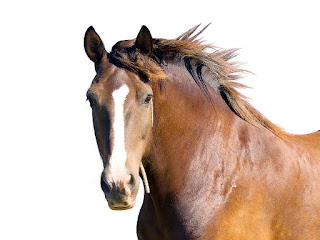Veterinarians will often suggest vitamin E supplements for horses with no access to pasture. There are many forms on the market; we'd like to provide some guidance to choosing the right one.
Like A, D and K, vitamin E falls into the category of fat-soluble vitamins. These four vitamins require fat for them to be absorbed from the digestive tract, and are stored in the liver and fatty tissues.
Similar to vitamin A, the body does not make any vitamin E; all of it has to come from the diet. Vitamin E is expressed in terms of "activity,” and the NRC or National Research Council recommends 1 International Unit (IU) of vitamin E per kilogram of horse bodyweight. So a 450 kg horse (1000 pounds) would need at least 450 IUs/day of vitamin E. The upper safe diet is considered to be 1,000 IU/kg dry matter (that’s 9100 IU/day for a 1000 lb horse). Thankfully, vitamin E does not appear to be toxic to horses even at relatively high consumption.
How Much Vitamin E Does a Horse Need?
Every horse needs vitamin E. It works closely with selenium to protect cells from excess free radicals or oxidative stress. According to holistichorse.com:
The amount depends on several factors. The more the horse is exercised, the more vitamin E is needed due to more free radicals being produced; hence more vitamin E is used up to protect cell membranes.
To survive: 1000-2000 units (IU) a day
Engaging in regular exercise: 5000 units a day
Neurological problems like EPM, EDM, and EMND, PSSM: 10,000 units a day
Broodmares: 5000 units a day
Older (20+) or Cushing’s horses: 5000 units a day
Found in high amounts in fresh pasture, levels of vitamin E begin to deteriorate the moment forage is cut for hay. Therefore, horses that do not have access to grass or a full serving of fortified grain should receive vitamin E supplementation.
Beyond the Basics
Natural or Synthetic? Which is best? When purchasing,
natural vitamin E appears as d-alpha tocopherol,
synthetic vitamin E appears as dl-alpha tocopherol.
Although synthetic vitamin E is absorbed by the horse, natural vitamin E has been shown to be more biologically active. It takes a smaller amount of d-alpha tocopherol (natural) to achieve the same activity in the body as dl-alpha tocopherol (synthetic). It's your choice: smaller amounts of the more expensive natural version or larger amounts of the less expensive synthetic version.
You might want to ask your veterinarian to draw a baseline blood sample before you start your horse on a vitamin E supplement and then measure serum alpha tocopherol again about two weeks later, Alpha tocopherol is a fairly fragile compound; your vet will take special care to protect the samples for the lab's analysis. Things like the wrong type of tube, exposing the sample to light, letting it get too warm, or repeated freeze/thaw cycles can all damage vitamin E in blood samples.
***
This blog is brought to you by Diagnostic Imaging Systems. Diagnostic Imaging Systems, Inc. (DIS) has been providing Quality Imaging products since 1983. The company combines industry knowledge with an understanding of the veterinary practice. For more information, go to Diagnostic Imaging Systems, Inc. website at: www.vetxray.com
All content provided on this blog is for informational purposes only. The owner of this blog makes no representations as to the accuracy or completeness of any information on this site or found by following any link on this site. The owner will not be liable for any errors or omissions in this information nor for the availability of this information. The owner will not be liable for any losses, injuries, or damages from the display or use of this information. These terms and conditions of use are subject to change at any time and without notice.


